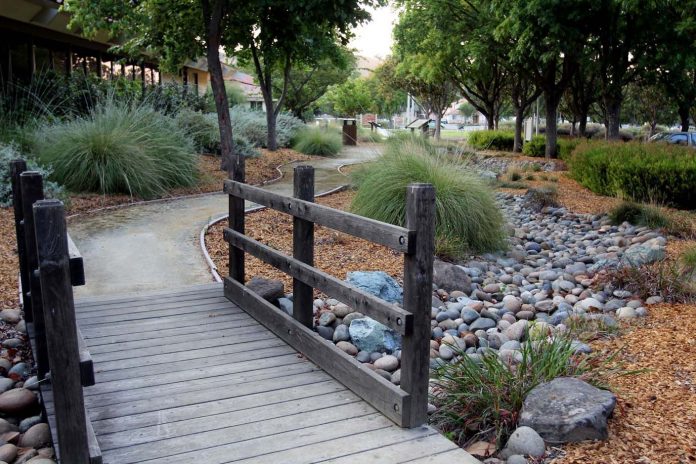Friends, if your lawn is luxuriant and green, I’m here to tell you that you’re heading for a heartbreak. And if words such as sage and yucca, poppy, manzanita and native grasses aren’t yet rolling off your tongue, they soon will be.
Yes, the drought has reached epic proportions with nearly 60 percent of California in a state of “exceptional drought,” the most critical category.
Although there are no state mandated restrictions in South Santa Clara County, Gov. Jerry Brown has asked Californians to voluntarily cut water usage by 20 percent. And some of that cutback comes in the form of how we water our lawns.
Now those of us living here in the South Valley know our average daily temperatures typically run a few degrees warmer than our neighbors to the north. Our lawns and landscaping plants dry out faster during our heated afternoons. Before the drought, we could add another day or two of watering during the hottest parts of the summer, keeping those lawns looking lushly green.
This year, because of the drought, the California Department of Water Resources is asking that we water early in the morning or later in the evening. And the city of Morgan Hill has begun a Monday/Wednesday/Friday schedule for watering days.
As I drive around my own neighborhood, I see signs of the drying out of landscape. Lawns that were once a vibrant green are showing a few dry patches.
Recently, when visiting with friends, the conversation turned to the drought. One friend wasn’t happy with his family’s high water bill. True, they grow their own veggies each summer, and the drought makes that problematic. And his lawn?
“I’m just going to paint my lawn green,” he grumbled.
So does this mean your neighbor who declines to maintain a Sunset Magazine-worthy landscape in his own front yard has now become—yikes—trendy? ‘Fraid so, friends. Brown is the new green.
A significant component of California’s economy, farming, has to be mentioned in a conversation about drought. With California producing the bulk of the country’s fruits and vegetables, along with dairy, wine and nuts, a healthy supply of water is as critical to continued food production as good soil and our long growing season.
To get the water vital to crop production, farmers are forced to drill new wells, ever deeper into the groundwater system, which, over time, impacts California aquifers. All of this has led to a sinking of soil throughout California’s Central Valley, damaging roads and infrastructure.
If that wasn’t challenging enough, an alarming theory has emerged that suggests the depletion of ground water and subsequent emptying of aquifers may contribute to the strength and frequency of earthquakes.
WHAT?
Now before you run off all willy-nilly, bolting your bookcases to the wall (OK, you should probably do that anyway—this IS earthquake country after all), perhaps a little water conserving by us 38 million Californians might help.
Gov. Brown’s suggested reduction of 20 percent per person is doable, right? And if you aren’t quite ready to go all 1960s “shower with a friend” water-conservation style, there is helpful advice from the California Department of Water Resources as well as water-saving tips from your very own city.
Common sense stuff such as turning off water when brushing your teeth, sweeping off your driveway and patio instead of hosing it down or installing low-flow shower heads and dual-flush toilets, and no, I don’t have a clue what THAT is, but our local hardware stores can undoubtedly fix that! And check out the rebates available for water-reducing measures.
As for beautiful and drought-resistant landscaping using the plants I mentioned above, visit Morgan Hill’s Waterwise Demonstration Garden at City Hall, 17575 Peak Ave. and take a look at some of the California native and drought-tolerant plantings nestled amongst the dry riverbed that runs through it. It’ll blow your socks off.
So will we ever again have those lush green landscapes? Do we need to learn to love the desert and cacti? Can my friend stop painting his lawn green?
Time will tell, friends; time will tell.
Gale Hammond is a writer and freelance photographer who has lived in Morgan Hill since 1983. Reach her at ga***************@***oo.com.










